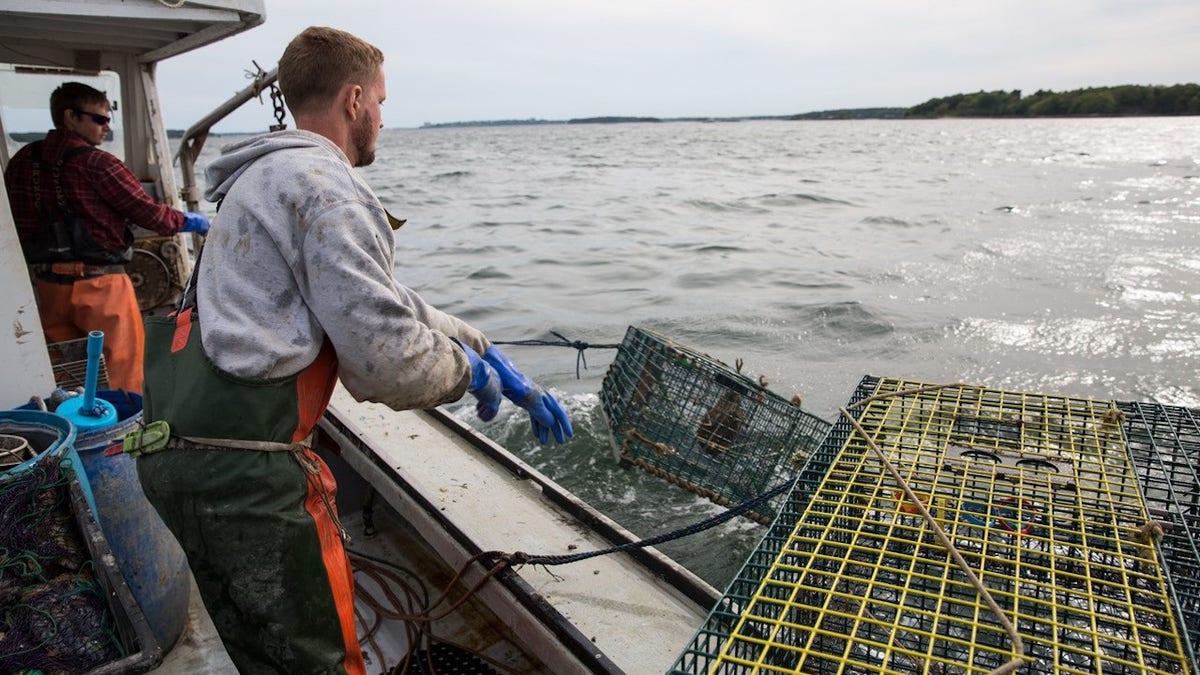Lobstermen win in court against the Biden administration over regulations
Chief Operation Officer of NEFSA Dustin Delano on how regulations hurt lobstermen the U.S. after court victory against the Biden administration
New England fishermen are sounding the alarm on studies that reveal offshore wind turbines emit electic currents that are deforming lobster and haddock, and "imitate effects of climate change" by raising ocean surface temperatures.
The New England Fishermen’s Stewardship Association (NEFSA) on Monday released an Offshore Wind Research Summary, a compilation of scholarly articles that identify dangers offshore wind farms pose to ocean ecosystems.
NEFSA concluded that there is "no scientific consensus as to the effects of offshore wind on ocean ecosystems and marine life," and is demanding that the Biden administration conduct the necessary studies before green-lighting offshore wind.
"We cannot industrialize the Gulf of Maine until we understand how the wind industry interacts with the fisheries that wild harvesters have stewarded responsibly for decades," said Jerry Leeman, NEFSA CEO and a longtime commercial fishing captain.
BIDEN ADMINISTRATION BLASTED FOR 'HYPOCRISY' ON OFFSHORE WIND AS IT SCRAMBLES TO PROBE WHALE DEATHS

The Bureau of Ocean Energy Management has already designated 9.8 million acres in the Gulf of Maine for wind farm development. (John Moore/Getty Images)
According to the report, one study published in the 2022 Journal of Marine Science and Engineering found that electromagnetic fields (EMF) emanating from sub-sea cables that carry energy from a single turbine to shore produce deformities in juvenile lobster.
EMF exposure also reduced a juvenile lobster's vertical swimming ability, which is critical for it to escape predators and access food.
That study warned offshore wind "could have a measurable impact on early development of two commercially important crustaceans."
Another study of sub-sea high voltage direct current cables used to power wind turbines found that magnetic field intensity reduced swimming activity for 60% of haddock larvae.
MAINE LOBSTERMEN CATCH BIG COURT VICTORY AGAINST BIDEN ADMINISTRATION'S 'EGREGIOUS' REGULATIONS

A found that electromagnetic fields emanating from sub-sea cables that carry energy from a single turbine to shore, produce deformities in juvenile lobster. (Maine Lobstermens Association/Marketing Collaborative)
The researchers warned that reduced swimming activity "might alter the spatial distribution of haddock larvae, which could result in them drifting to different areas, potentially areas with less food and more predation." The researchers further warned of "population-scale implications for haddock in the wild.
"Lobster and haddock are the commercial backbone of New England’s fisheries," said Dustin Delano, NEFSA COO and a fourth-generation lobsterman. "Foreign green energy companies will endanger New England’s working people and its maritime heritage unless they take the time necessary for careful study of our fisheries and their plans for development," he said.
The Bureau of Ocean Energy Management (BOEM), a regulatory body from the Department of Interior that leases offshore areas for energy development, has already designated 9.8 million acres in the Gulf of Maine for wind farm development.
The Gulf of Maine "call area", a term BOEM uses to identify areas with high wind potential, encompasses highly productive fishing grounds that the fisherman argue are essential to the economic wellbeing of the fishing fleet and coastal communities.
HOW MAINE LOBSTERMEN TURNED A ‘SLAP IN THE FACE’ FROM THE WHITE HOUSE INTO A POLICY VICTORY

"Lobster and haddock are the commercial backbone of New England’s fisheries," said Dustin Delano, NEFSA COO and a fourth-generation lobsterman. (AP Photo/Robert F. Bukaty, File)
Another study cited in the summary published in Frontiers in Marine Science found that wind farms increase sea surface temperatures and alter upper-ocean hydrodynamics in ways scientists do not yet understand.
The study found that "coherent patterns of increasing mean sea surface temperature are present in areas of wind farm development." Further, the "large-scale surface heating of up to 0.1°C imitates the effects of climate change, in which an increase of sea surface temperature is also to be expected as a result of the warming of the earth’s atmosphere," the summary noted.
CLICK HERE TO GET THE FOX NEWS APP
"The turbine-induced changes are one order of magnitude smaller than average perturbations due to climate change," the report noted, adding that the authors of the study warn that the cumulative effects of increasing offshore installations will amplify the consequences at scale.
Leeman says that the government's attempt to justify wind farms leans on "voodoo science" because the proper methods and sufficient amount of time have not been applied.
"The problem is the science that wraps around the science, the whole purpose for it is misinterpreted to the public through the fact that they think they're getting real, accurate science," Leeman said.


